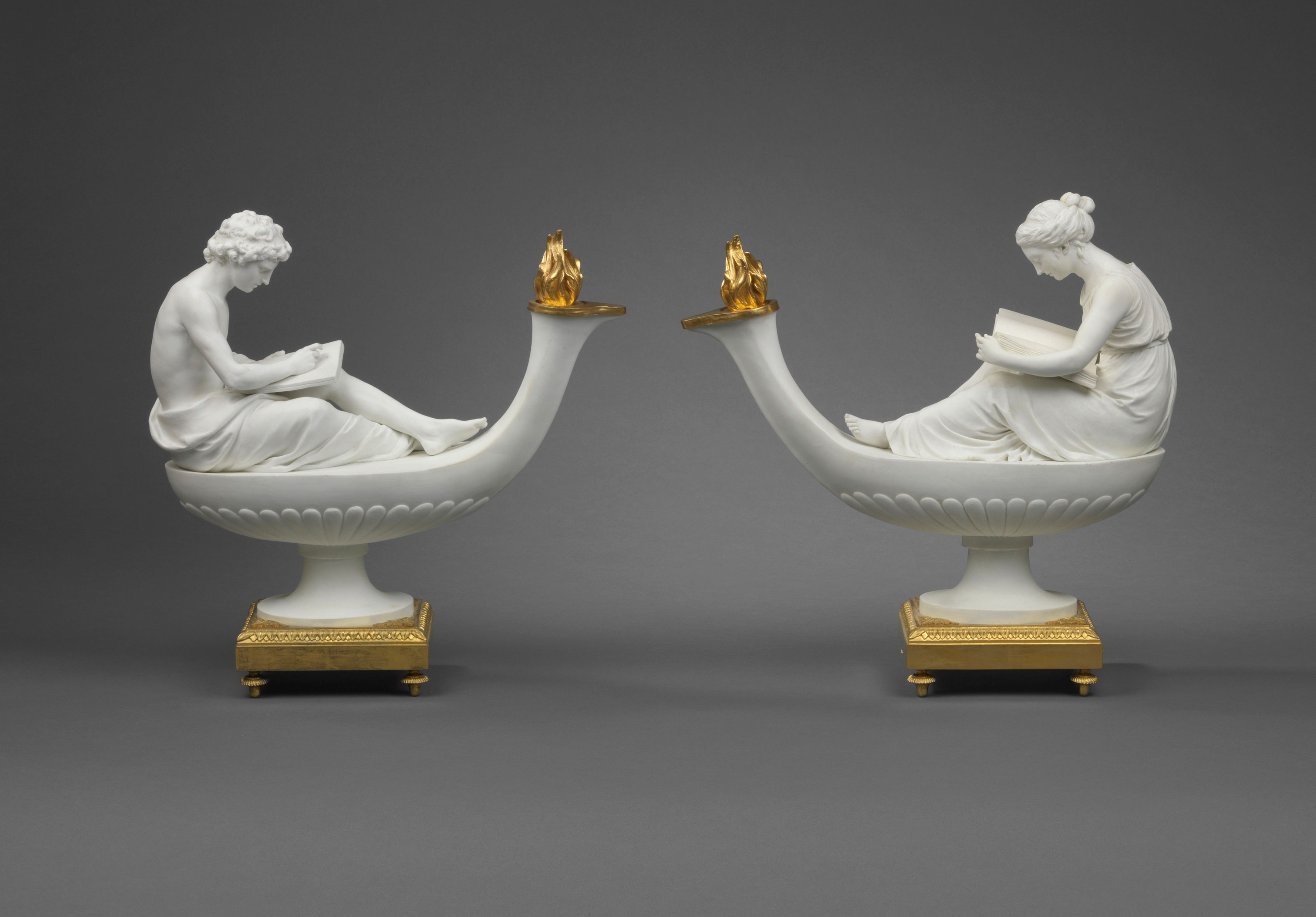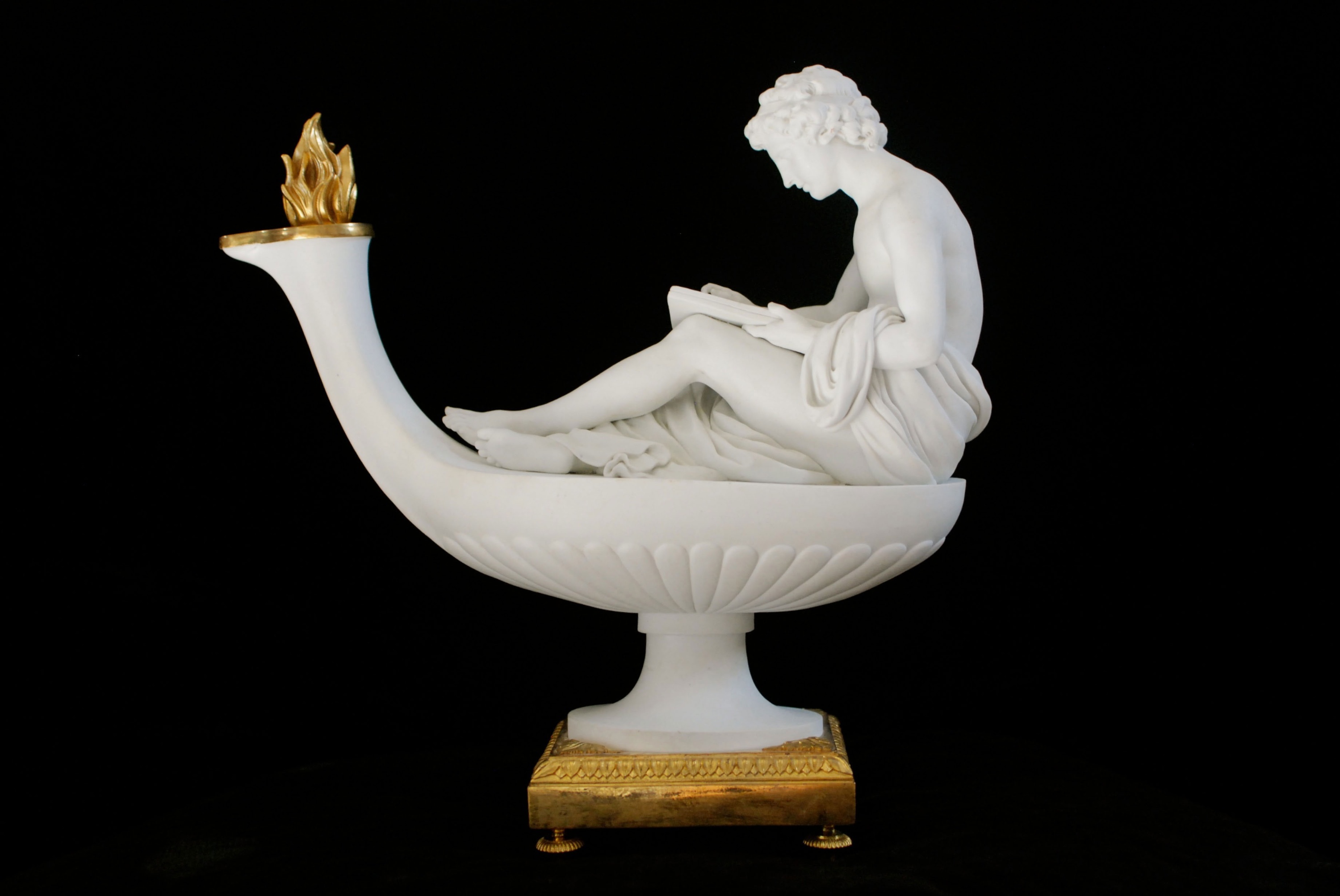

Circa 1782


Formerly collection of Henry René D’Allemagne (1863–1950).
Allegorical figures sitting on lamps were based on ancient models brought to light during the excavations at Pompeii and Herculaneum. The young woman, with an open book on her lap, represents Study, while the young man, writing on a tablet, symbolizes Philosophy.
Each lamp stands on a rectangular base of finely chased and gilded bronze, decorated with a frieze of waterleaf and set on four feet in the shape of little tops.
The figures, designed by Boizot to be produced in biscuit porcelain by the Sèvres Porcelain Manufactory, were used with Boizot’s authorization to decorate lamps also entirely of biscuit, based on a bronze model by Rémond and Thomire.
Europe learned of recently unearthed ancient artworks not only through engravings, but also through the many drawings done by artists who visited the sites. This abundant visual documentation was a general source of inspiration for artists in all fields. At the same time, they were nourished on theories expounded by the likes of the Comte de Caylus in Le Recueil d’Antiquités Égyptiennes, Étrusques, Grecques et Romaines (1752) and Johann Winckelmann in Gedanken über die Nachahmung der grieschische Werke (1755, published in English in 1765 as Reflections on the Painting and Sculpture of the Greeks), books that also provided artists with visual models reproduced in whole or in part.
This new look at antiquity thus directly or indirectly inspired the forms taken by the objects discussed here. Two ancient-style lamps, for instance, representing figures of Philosophy and Study, were based on a drawing by the Abbé de Saint-Non (1727–1791), now in the Victoria & Albert Museum in London, showing a lamp on which sits a young man writing on a tablet.
Before being fired as biscuit-ware in the porcelain manufactory at Sèvres, the models for the two figures here were executed by Simon-Louis Boizot (1743–1806), who was head of the Sèvres sculpture workshop from 1773 to 1800. To quote one of Boizot’s biographers, these two figures reflect “a fairly ceremonial antiquity” and display remarkable “moderation and distinction” that provide “striking proof of Boizot’s attentiveness to the artistic innovations of his day.” The porcelain factory exploited these figures merely by setting them on a porcelain base. A 1782 edition of Philosophy is now in the Victoria & Albert Museum in London.
A new use for the figures was found thanks to bronze-worker François Rémond (1747–1812), who in 1784 placed them on a model of a clock that enjoyed great popularity. The two figures leaned against a stone that supported the movement. Shortly afterward the figures were set on ancient-style lamps, similar to the ones shown here, but produced solely in patinated, gilded bronze. This initiative should probably be credited to Boizot himself, who was on friendly terms with Abbé de Saint-Non. The bronze model was executed by Rémond but copies were also produced by Pierre-Philippe Thomire (1751–1843), whose list of models includes the following item: “Two so-called [lamps] with figures of Study, priced 300 francs.” These figures were furthermore used for andirons, a pair of which belongs to the initial set of furnishings in Napoleon and Josephine’s house on Rue de la Victoire in Paris.
| DIMENSIONS | CM | INCHES |
|---|---|---|
| Width: | 32 | 13 |
| Depth: | 12 | 5 |
| Height: | 33 | 13 |